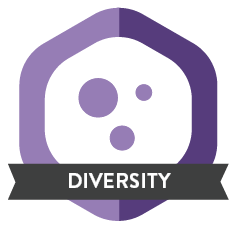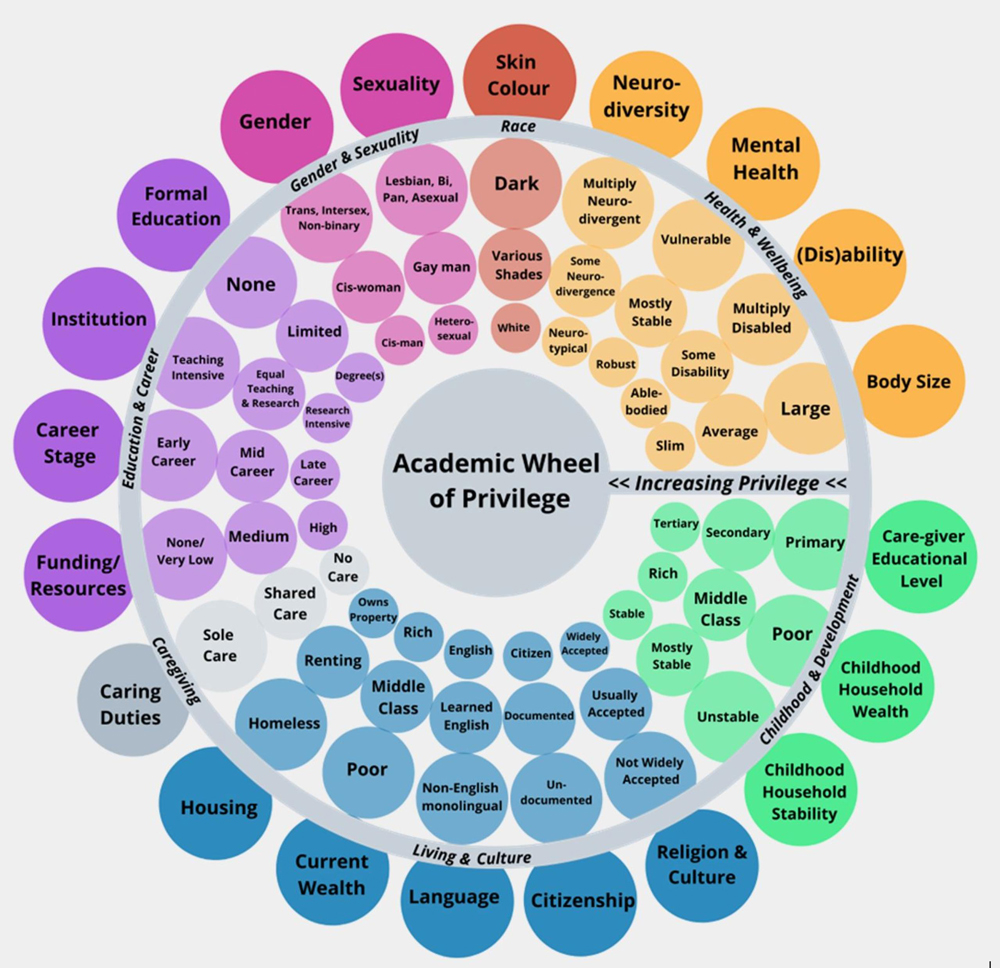Diversity in GEP
GEP strives to increase diversity in environmental psychological research by publishing high-quality work from different theoretical, methodological (e.g., quantitative, qualitative, mixed methods), and cultural perspectives. The journal is keen to publish work that makes currently underrepresented authors and populations in environmental psychology visible (e.g., research from outside northwestern Europe and British-descent societies; research involving indigenous and underrepresented populations such as people living in rural regions or belonging to low income groups, research produced by or including people who fall in categories in outer circle of the diversity wheel, see Figure below) and to make the research in our field more representative of different human groups. With this endeavour, we aim to put diversity and inclusiveness on the agenda within environmental psychology and beyond.
GEP implements several steps to increase attention to diversity and to make reporting more transparent. Specifically,
-
GEP tries to set a good example and embraces diversity within the journal’s editorial team (i.e., associate editors and editorial board). This facilitates global outreach and publication of work coming from otherwise underrepresented regions and populations.

Diversity Badge
(based on the COS badges) - An important step towards this goal is to increase the transparency of how strongly and in what ways articles published in GEP contribute to diversity and inclusion. To achieve this, authors are asked to answer a few questions related to different aspects of diversity (see "Questions for GEP’s Diversity Statement") when they submit their work. Based on their answers, GEP will prepare a standardised diversity statement. If their paper is accepted for publication, authors can decide if they want to include this statement or not in their paper. Articles that include a diversity statement will be rewarded with a diversity badge. The decision to include or exclude a diversity statement will not influence the scientific evaluation of the submission.
- GEP considers diversity as an evaluation criterion for manuscripts. Efforts to increase diversity (e.g., collection of non-convenient samples, authors from underrepresented populations) are therefore rewarded with increased chances to be taken into consideration for publication.
- Each submission is encouraged to justify their choice to sample a certain population (similar to sample size justifications).
- Each submission is encouraged to provide an extensive sample description (when applicable to article type). This description shall include inclusive measures of gender, region of origin, socio-economic status, language, and other relevant sample descriptions for the purpose of the study. (This contributes not only to transparency of the research published in GEP but also facilitates meta-analyses.) If these details cannot be provided, authors have to acknowledge this explicitly.
- Authors should discuss the generalizability and implications of their findings and possible effects of culture and context.
- GEP discourages titles including the country of study and encourages a short sample and study site description in the abstract. This measure shall counteract common stereotypes such as the belief that articles with countries in the title are less generalisable or relevant.
- GEP’s Associate Editors are sharing the responsibility to reach out to researchers from underrepresented groups to increase the visibility of GEP as a publishing platform beyond the usual target groups and, in turn, to inform the journal about recent developments that support diversity and inclusion, such as capacity building and collaboration across borders.

“Academic Wheel of Privilege, a colour wheel made up of many factors. Least privileged factors (homeless, dark-skinned, trans, etc) are on the outside and most privileged (rich, white, hetero, etc) are on the inside. Retrieved from: https://science.nasa.gov/open-science/transform-to-open-science/stories/dr-flavio-azevedo “


